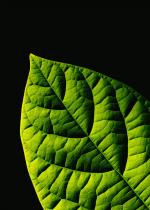|
This section contains 2,223 words (approx. 8 pages at 300 words per page) |

|
The anatomy of plants relates to the internal structure and organization of the mature plant body, especially the vegetative organs of plants.
Cells
As in all other organisms, cells make up the fundamental unit of the plant body. Plant cells, whether formed in vegetative or reproductive organs, are usually bounded by a thin, mostly cellulosic wall that encloses the living protoplast. Young cells characteristically develop numerous membrane-bound vesicles, originating from the endoplasmic reticulum (ER) and dictyosomes. Some of these immature cells retain their ability to divide and are called meristematic. As cells age, the vesicles grow together, usually forming one relatively large water-filled vacuole positioned in the cell's center, which inhibits further cell division. Some older cells additionally produce a thick lignified cell wall located between the cellulosic wall and the protoplast. Cell walls are ordinarily considered a part of the cell's nonliving environment...
|
This section contains 2,223 words (approx. 8 pages at 300 words per page) |

|


